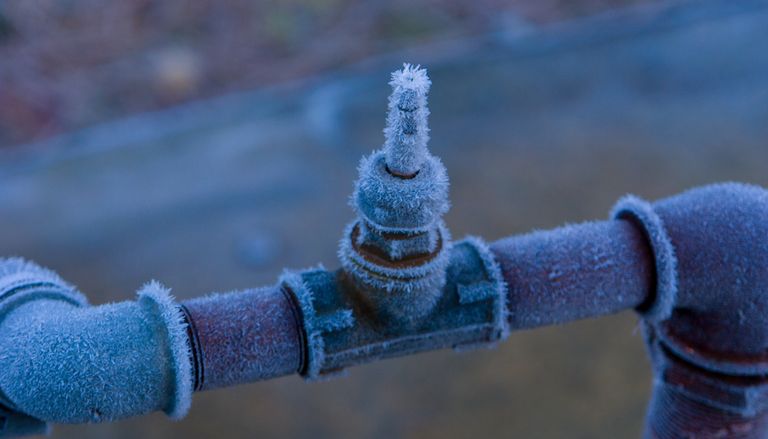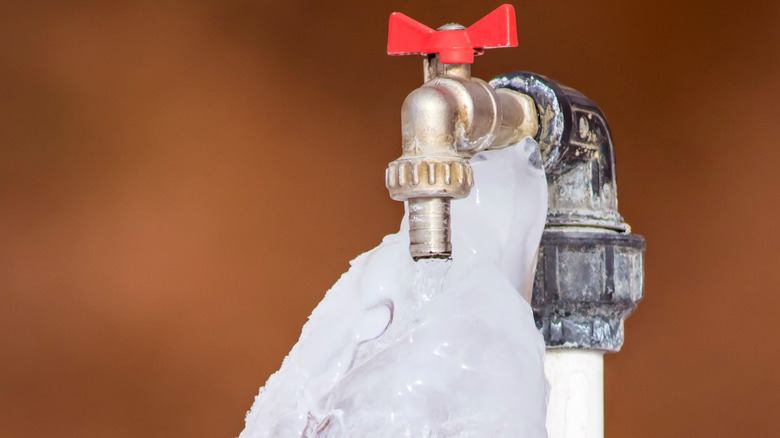Any individual seems to have their own individual concepts when it comes to Winter Plumbing Precautions: Preventing Frozen Pipes.

Winter can wreak havoc on your plumbing, specifically by freezing pipelines. Below's just how to avoid it from occurring and what to do if it does.
Intro
As temperature levels decline, the risk of frozen pipelines increases, potentially leading to pricey repair services and water damages. Recognizing just how to avoid frozen pipelines is vital for homeowners in cool climates.
Avoidance Tips
Insulating vulnerable pipelines
Wrap pipelines in insulation sleeves or make use of warmth tape to secure them from freezing temperature levels. Concentrate on pipelines in unheated or external locations of the home.
Home heating techniques
Maintain indoor spaces appropriately heated up, especially areas with pipes. Open cupboard doors to enable warm air to circulate around pipelines under sinks.
Exactly how to identify icy pipes
Look for decreased water circulation from faucets, uncommon odors or noises from pipelines, and noticeable frost on exposed pipelines.
Long-Term Solutions
Architectural changes
Take into consideration rerouting pipes far from exterior wall surfaces or unheated areas. Add added insulation to attics, basements, and crawl spaces.
Updating insulation
Invest in premium insulation for pipes, attics, and walls. Proper insulation helps keep constant temperatures and minimizes the risk of frozen pipes.
Shielding Outdoor Plumbing
Yard tubes and outside faucets
Detach and drain garden hoses before winter months. Set up frost-proof spigots or cover exterior faucets with shielded caps.
Understanding Icy Pipelines
What causes pipelines to ice up?
Pipes ice up when revealed to temperatures below 32 ° F (0 ° C) for expanded durations. As water inside the pipes ices up, it increases, taxing the pipeline wall surfaces and possibly creating them to rupture.
Threats and damages
Frozen pipes can bring about water system disruptions, residential property damage, and expensive repairs. Burst pipelines can flooding homes and cause extensive architectural damage.
Indications of Frozen Piping
Recognizing icy pipelines early can prevent them from breaking.
What to Do If Your Pipes Freeze
Immediate activities to take
If you believe frozen pipes, keep taps open up to relieve stress as the ice thaws. Utilize a hairdryer or towels soaked in warm water to thaw pipelines gradually.
Final thought
Protecting against icy pipes calls for proactive steps and quick reactions. By comprehending the causes, indications, and preventive measures, home owners can safeguard their pipes throughout cold weather.
5 Ways to Prevent Frozen Pipes
Drain Outdoor Faucets and Disconnect Hoses
First, close the shut-off valve that controls the flow of water in the pipe to your outdoor faucet. Then, head outside to disconnect and drain your hose and open the outdoor faucet to allow the water to completely drain out of the line. Turn off the faucet when done. Finally, head back to the shut-off valve and drain the remaining water inside the pipe into a bucket or container. Additionally, if you have a home irrigation system, you should consider hiring an expert to clear the system of water each year.
Insulate Pipes
One of the best and most cost-effective methods for preventing frozen water pipes is to wrap your pipes with insulation. This is especially important for areas in your home that aren’t exposed to heat, such as an attic. We suggest using foam sleeves, which can typically be found at your local hardware store.
Keep Heat Running at 65
Your pipes are located inside your walls, and the temperature there is much colder than the rest of the house. To prevent your pipes from freezing, The Insurance Information Institute suggests that you keep your home heated to at least 65 degrees, even when traveling. You may want to invest in smart devices that can keep an eye on the temperature in your home while you’re away.
Leave Water Dripping
Moving water — even a small trickle — can prevent ice from forming inside your pipes. When freezing temps are imminent, start a drip of water from all faucets that serve exposed pipes. Leaving a few faucets running will also help relieve pressure inside the pipes and help prevent a rupture if the water inside freezes.
Open Cupboard Doors
Warm your kitchen and bathroom pipes by opening cupboards and vanities. You should also leave your interior doors ajar to help warm air circulate evenly throughout your home.

I came across that piece on How to prepare your home plumbing for winter weather when exploring the web. Do you know anybody else who is enthusiastic about the subject? Feel free to promote it. We truly appreciate your readership.
Click On This Link